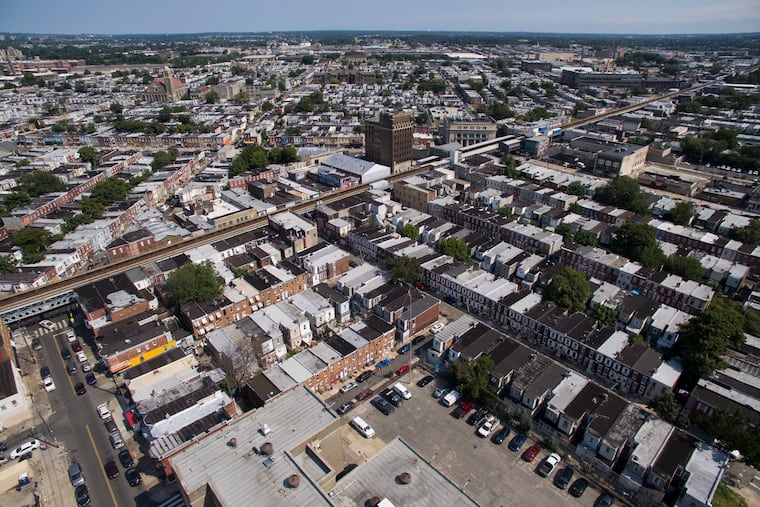Tree planting can’t achieve climate justice without renter protections and AC access | Opinion
Trees can help neighborhoods facing the worst of heat, but there should be a plan to offset gentrification and make sure residents benefit long-term.

We are in the middle of a climate catastrophe that will make conditions like floods and heat waves worse — and the heat’s already here. The National Weather Service issued an “excessive heat warning” for the Philly region (except southeastern New Jersey) through Friday, with Thursday expected to be the hottest day of summer.
We know these changes can be deadly. In June, amid the Pacific Northwest’s unprecedented heat wave, 63 deaths were reported in Oregon, with 45 heat-related deaths in Multnomah County.
» READ MORE: Why Philly trees cast more shade on the wealthier
Here in Philly, we must respond to the risks appropriately. Preventing further death or other health complications from heat-related illnesses will require major investment in the city’s most at-risk areas. In response to climate change, the City of Philadelphia has begun to push for increased tree canopy cover across neighborhoods. Trees are linked to decreased temperature, mitigating the heat island effect where parts of the city experience higher temperatures, and myriad other health benefits like decreased obesity, hypertension, and diabetes. Unsurprisingly, evidence shows that poorer and Blacker neighborhoods have less canopy cover than richer and whiter neighborhoods.
However, this strategy alone will lead to gentrification and displacement for renter-occupied properties. A climate justice plan focusing on providing air-conditioning and utility support, with sufficient renter protections, is the necessary response — not just increasing the tree canopy.
Oregon government officials found that the deaths from the recent heat wave were most common for individuals who were alone and lacked air-conditioning. Philadelphians know these conditions well already, with Hunting Park residents having to fundraise this year for air conditioners and fans. It is an unbearable feeling to experience heat and not be able to escape it due to age or disability. Sometimes, staying in a hot steaming house is a matter of safety rather than comfort.
» READ MORE: It will feel like 107 in Philly on Thursday, maybe 120 in the sun, forecasters say. But how do they know?
We can discuss tree growth and increasing the canopy, but while we muse on that long-term growth, the next heat wave may spell death. We need programs to get air-conditioning or cooling units to at-risk neighborhoods and utility policies that prevent shut-offs in summer.
The issue of heat-related deaths is not new and neither is the idea to increase green space and parks. In 1993, the City reported 114 heat-related deaths. Its response was to implement a robust heat volunteer response network that has prevented many deaths over the years. In 1995, a Trust for Public Land’s survey found that in 16 of 23 cities, parkland in poor neighborhoods was crowded and inadequate, causing crime and safety issues. At the time, Newark’s Mayor, Sharpe James, proclaimed that “We are going to recreate or we are going to incarcerate.” Black and brown community access to green space was one of the reasons cited for funding the Schuylkill River Park abutting the now-gentrified Graduate Hospital neighborhood. Park supporters at the time claimed that it would address the issue of the green space in “minority” communities. Yet 25 years later, parks and green space disparities still exist between poor and wealthy, largely white communities.
» READ MORE: Summers are hotter, but heat-related deaths have dropped. Philadelphia has a lot do with that.
Researchers warn against “green gentrification” without a focus on equity. A recent observational study of Portland’s Friends of Trees found that tree planting was associated with gentrification over time, increasing sale and rental prices for single-family homes. More optimistically for tree planting, the study suggests that the possible negative gentrifying effects should be balanced against benefits for low-income neighborhoods and can be offset with other planning. They suggest that nonprofits and government agencies should partner with local residents to ameliorate the effects of gentrification while also embarking on a comprehensive approach to increase the tree canopy. Others suggest that tree planting can be part of the solution, but is merely one element of a long-term strategy to improve environmental amenities in low-income communities.
Philadelphia beat much of the heat in the ‘90s thanks to deep social networks. Let’s rely again on those networks and listen to residents about their most urgent needs. As we plant trees, we must put those needs at the center and continue to support neighborhood efforts like Hunting Park NAC’s. Climate justice ultimately means access to cool and refreshing air — through air-conditioning and utility justice in addition to tree canopy. Extreme weather events will become more common in coming years. We must prepare before the next heat wave comes and harms or kills neighbors and friends.
Sterling Johnson is a doctoral student at Temple University and a housing and homelessness advocate.